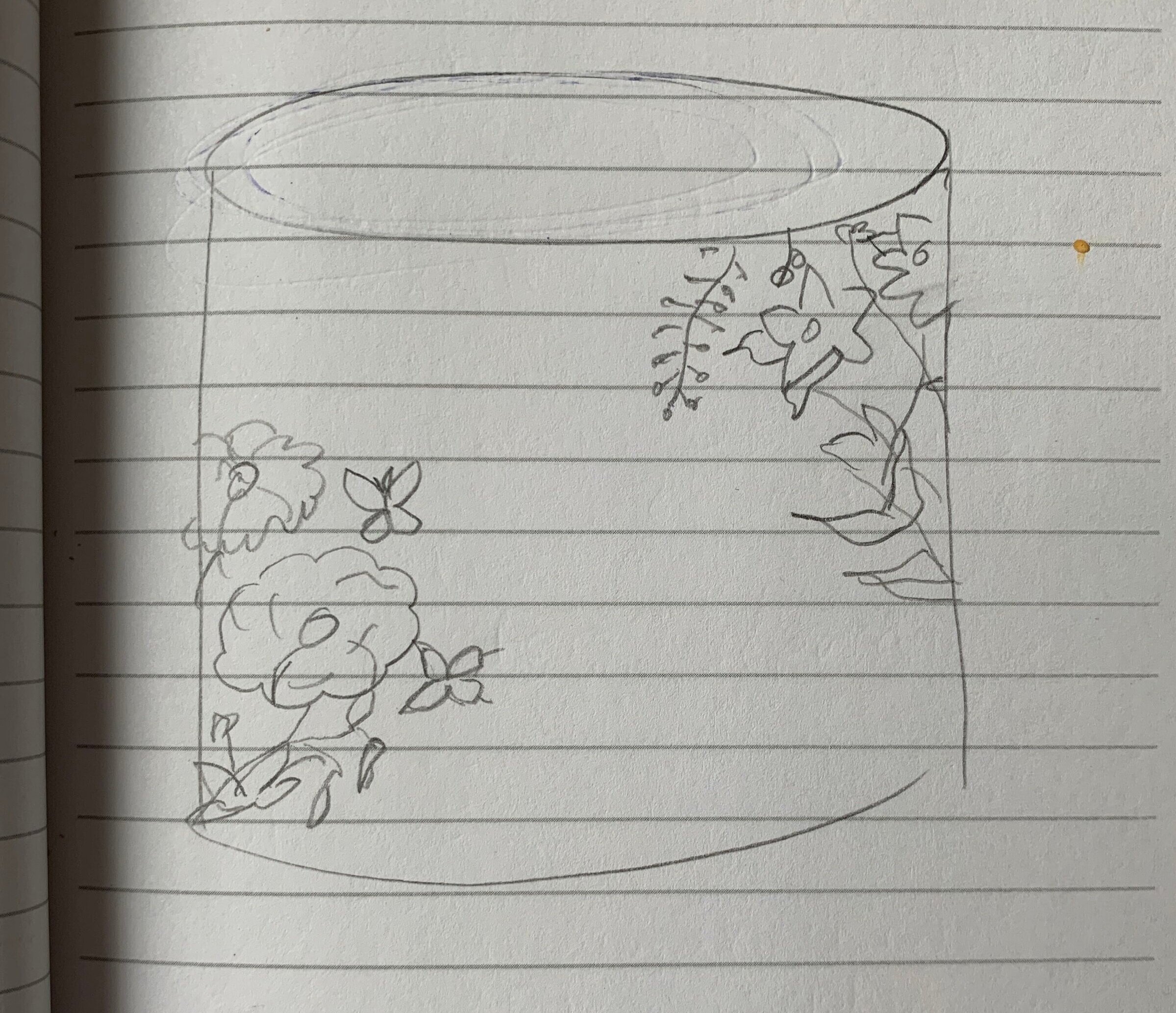The n00b’s guide to painting on buttercream
Tips for painting on buttercream cakes:
Sketch out your idea on paper before painting on the cake.
Make sure your buttercream is cold.
American buttercream and condensed milk buttercream work better than meringue buttercream.
Use gel food colors straight from the bottle - don’t dilute.
(Optional bonus tip) Invest in a set of nice brushes.
Now to elaborate on each of the above points…
Tip 1: Sketch out your idea on paper before painting on the cake.
You can skip this step if you’re artistically inclined and can confidently freehand shapes on a rounded buttery surface, but for the rest of us, it’s helpful to map out where and how your drawing will sit on your cake. Check out the super rough sketch I made before painting:
How’s that for an ugly sketch, huh? But imagine if this was how the cake had turned out! I’m a big fan of the adage “measure twice, cut once,” and it’s so apropos here.
Tip 2: Make sure your buttercream is cold.
It will be hard to paint on warm buttercream because it’s too soft - your brush is going to squish right into the buttercream! To make your cake surface as “canvas-like” as possible, pop your cake into the fridge for 1-2 hours before you paint it.
Tip 3: American buttercream and condensed milk buttercream work better than meringue buttercream.
Similar to Tip 2, you need to make sure your surface is “canvas-like” and meringue buttercreams are simply too buttery / slippery to give you the texture necessary to take in brushed-on pigments. Use American buttercream (a mixture of butter and powdered sugar) or use condensed milk buttercream (recipe here), which is what I used in the cake photographed above. If the buttercream crusts, it’s even better, but it doesn’t have to - just make sure it’s cold (see tip 2 above).
Tip 4: Use gel food colors straight from the bottle - don’t dilute.
I had a lot of trouble painting on buttercream in the past because I read all these blogs that recommended diluting food gel colors with vodka before painting with them. But every time I tried this technique, I’d end up with beads of pigment on the buttercream (rather than a solid brushstroke of pigment). Using food gel colors straight from the bottle gave me the exact effect I wanted.
Tip 5: (Optional bonus tip) Invest in a set of nice brushes.
To get delicate leaf-like brushstrokes, it helps to have a set of brushes of varying thicknesses with nicely tapered tips. I purchased this set of watercolor brushes from Amazon for the express purpose of painting this cake, and I’m confident I’ll get many more uses out of them. #notsponsored
My foray into painted buttercream
Painted cakes used to scare me. I marveled at @jankimgrumbles and @theroseonthecake’s intricate brushwork in disbelief, and a quick scan of the #paintedcake hashtag feed on Instagram intimidated me to no end. Surely, these bakers had formal training in the arts, I thought to myself. How else could they paint like that - and on a round surface to boot!?
Another thing that scared me: many of these bakers (like @theroseonthecake) painted on fondant, which was not an ingredient I wanted to start using (I’m not a fan of the taste, and I don’t want to create food waste, as I’d likely decorate the fondant and throw it away before eating the rest of the cake).
So the question remained: was it possible to get the effect of painted fondant on buttercream? And if so, was it possible for someone as untrained-in-the-arts and shaky-handed as me to pull it off?
As it turns out, yes, and yes! Inspired by the beautiful botanical wallpaper at Bakeri in Brooklyn, I decided to make a cake tribute and was shocked at how doable it was. Granted, this was my first stab, so there are many opportunities for improvement - but the cake somewhat resembles the wallpaper if I do say so myself:


